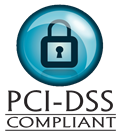If you need the balance of your student loans, you can obtain this information through the
https://www.myeddebt.com website.
back to top
One option for getting out of default is repaying your defaulted student loan in full. FAMS offers a variety of convenient
payment methods to make this easier for you.
back to top
After you graduate, leave school, or drop below half-time enrollment, you have six or nine months before you begin repayment. You will receive information about repayment and will be notified by your loan provider of the date loan repayment begins.
If you default on your student loan, the maturity date of each promissory note is accelerated making payment in full immediately due, and you are no longer eligible for any type of deferment or forbearance. Continued failure to repay a loan in default may lead to several negative consequences for you over the long-term including but not limited to garnishment of your wages, offset of your federal and/or state income tax refunds and any other payments, as authorized by law, and losing your eligibility for other federal loans such as FHA or VA.
However, there are now more ways than ever before to repay your defaulted student loan and certain programs can even remove your loan from its defaulted status. Determining which repayment option that is right for you depends your objective.
I want to pay my defaulted student loan in monthly payments that are affordable to me.
- All guaranty agencies and the U.S. Department of Education (Department) will accept regular monthly payments that are both reasonable to the agency and affordable to you. Call FAMS at 1-800-399-4639 and one of our customer service representatives will assist you with determining a repayment amount that is right for you
I want to reestablish my eligibility for additional federal student aid and go back to school."
It is now easy to restore your eligibility to receive additional Title IV federal financial aid. Basically, your options are:
- Repay or satisfy the loan in full.
- Make six agreed-upon monthly payments over a six month period. Your payment amount must be approved in advance by the Department of Education. Every qualifying payment must be received between 20 days (based on program type) before or 15 days after the due date, and you cannot make all six payments as a single lump sum payment. Once your eligibility to receive additional federal financial aid has been restored after making six consecutive monthly payments, you must continue to make timely monthly payments to maintain your eligibility or else it will be permanently lost until the debt is resolved entirely. In other words, you may qualify for this program only once.
- Consolidate your loan through the FAMS Student Loan Consolidation Program.
- Rehabilitate your loan through the FAMS loan rehabilitation program.
Since defaulted student loans have no statute of limitations for enforceability, you would remain ineligible for additional federal financial aid until you complete one of the options mentioned above.
I'm applying for a HUD (FHA) or VA loan and I don't qualify because of my defaulted student loan.
- Your options for reinstating your eligibility to receive a HUD (FHA) or VA loan are: repay or satisfy the loan in full; consolidate your loan through the FAMS Student Loan Consolidation Program; or rehabilitate your loan through the FAMS Loan Rehabilitation program. Since defaulted student loans have no statute of limitations for enforceability, you would remain ineligible to receive a HUD or VA loan until you complete one of the options mentioned above.
My credit record is tarnished because of my defaulted student loan. Is there anything that I can do to improve my credit record?
- Failure to repay your defaulted student loan can be damaging to your credit record. In fact, consumer reporting agencies may continue to report an account for 7 years from the opening date. However, there are several things that you can do to at least partially, and in some cases, fully restore your credit record. Your options for bettering your credit report include: repay or satisfy the loan in full; consolidate your loan through the FAMS Loan Consolidation Program; or rehabilitate your loan through our loan rehabilitation program.If you want the negative credit report made by the Department removed, you must successfully complete our loan rehabilitation program.
Can I pay my defaulted student loan held by the Department by credit card?
- Yes. You can pay with a credit card by registering online at http://pay.gov, or you call FAMS at 800-399-4639.
What address do I send my payments to?
If you have a defaulted student loan held by the U.S. Department of Education, you can mail a check or money order to the address below:
Please include your name, address, U.S. Department of Education account number with your payment.
- Make personal check, money order or cashiers check payable to FAMS
- Mail your payment to:
Address:
National Payment Center
P.O. Box 105028
Atlanta, GA 30348-5028
back to top
Under the Federal Family Education Loan (FFEL) Program, after your student loan is placed in default by the holder of the loan, an insurance claim for the amount of the loan is paid by the guaranty agency (the organization that administers the FFEL Program for your state) to the holder of the loan. To find out more about your repayment options for your loan held by a guaranty agency, please call the agency servicing your loan.
You can call the Federal Student Aid Information Center at 1-800-4-FED-AID (1-800-433-3243), to find out which guaranty agency holds your loan. If you already know which agency is servicing your loan, you can check here for a complete list of each guaranty agency's address and phone number. Failure to repay the loan may lead to several negative consequences for you.
back to top
Benefits of Rehabilitation
- Reduced monthly payments for borrowers eligible for the Reasonable and Affordable Program.
- Tax-offsets (IRS withholding of tax refunds) end.
- Wage garnishment ends.
- Eligibility for loan deferment and forbearance may be reinstated.
- Eligibility for federal student aid may be reinstated.
How Rehab Works
Student loan rehabilitation is an opportunity to clear the default on a federal student loan and regain eligibility for federal student aid.
After 9, timely, voluntary payments made according to your agreement, the loan can be rehabilitated and the default status removed. The rehabilitation is complete when all payments have been made, the account has been removed from default, and and purchased by an eligible lender.
Are You Eligible?
Based on Department of Education guidelines and all required documents have been returned, FAMS works to arrange a payment plan for you. The Reasonable and Affordable program payment amount is based on your current financial status. Eligibility requires proof of financial status.
If you are not eligible for the Reasonable and Affordable Rehabilitation program you may still be eligible for the Standard Rehabilitation Program.
The
Repayment Calculator can help you determine what your payments will be.
Frequently Asked Questions
What happens if my payment is late?
Our regular Rehabilitation program allows a grace period of 20 days. However, if you have a Perkins loan or trying to obtain Title IV funding, the grace period is 15 days.
What happens if I a miss a payment?
It depends on your loan type. For Perkins loans, payments prior to the missed payment may not count towards your rehabilitation, and you may not be able to complete the rehabilitation. If you know in advance that you will miss a payment, contact FAMS as soon as possible and an agent can assist you.
Can I change my payment schedule?
It is possible to change your payment schedule, however, you will have to contact a FAMS agent for approval. Approvals are based on case-by-case scenarios..
Can I request a rehabilitation if I already had one?
If you completed the Rehabilitation program prior to 8/14/2008, you are eligible. If you completed the Rehabilitation on or after 8/14/08, you are no longer eligible.
Can I rehabilitate my private loans?
This option is not available through FAMS. Contact your loan provider to discover if this an option for you.
Will my payments go up after I complete my rehabilitation?
Possibly. Once your rehabilitation is complete, the default status is removed and the loan is returned to the loan servicer. At that time you can request a repayment plan that meets your financial needs, or request deferment or forbearance.
Does wage garnishment count towards my rehabilitation?
No. Payments secured from you on an involuntary basis, such as through wage garnishment or litigation, cannot be counted toward your rehabilitation payments.
How long after the rehabilitation is complete will the wage garnishment/tax offset end?
Typically, 60-90 days after the final rehabilitation payment has been made the account will be removed from default, and the U.S. Treasury records will be updated by the U.S. Department of Education.
You can determine if you are still certified for tax offset by calling the U.S. Department of Treasury at (800) 304-3107.
Contact FAMS if you would like to request rehabilitation of your student loans.
back to top
You have the option for getting out of default through loan consolidation. Loan consolidation allows you to pay off the outstanding combined balance(s) for one or more federal student loans to create a new single loan with a fixed interest rate.
A defaulted federal student loan may be included in a consolidation loan after you've made arrangements with ED and made several voluntary payments. Usually, you would be required to make at least three consecutive, voluntary, and on-time payments prior to consolidation.
Note: You may be required to pay late fees up to 18.5 percent of the outstanding loan (including the principal and interest). The fees become part of the principal for the consolidation loan. For example, a defaulted loan of $8,500 plus $1,500 of accrued interest = $10,000. Fees of $1,850 can be added to the $10,000, which means the consolidation loan will be made for $11,850.
back to top
Carefully consider whether loan consolidation is the best option for you. Loan consolidation can greatly simplify loan repayment by centralizing your loans to one bill and can lower monthly payments by giving you up to 30 years to repay your loans. You might also have access to alternative repayment plans you would not have had before, and you'll be able to switch your variable interest rate loans to a fixed interest rate.
However, if you increase the length of your repayment period, you'll also make more payments and pay more in interest. Compare your current monthly payments to what monthly payments would be if you consolidated your loans.
You also should consider the impact of losing any borrower benefits offered with the original loans. Borrower benefits from your original loan, which may include interest rate discounts, principal rebates, or some loan cancellation benefits, can significantly reduce the cost of repaying your loans. You might lose those benefits if you consolidate.
Once your loans are combined into a Direct Consolidation Loan, they cannot be removed. The loans that were consolidated are paid off and no longer exist. Take the time to study the pros and cons of consolidation before you submit your application. Review the Consolidation Checklist to see if consolidation is the best option for you.
back to top
Generally, you are eligible to consolidate after you graduate, leave school, or drop below half-time enrollment.
back to top
To apply for loan consolidation
Contact FAMS and we will assist you.
back to top












